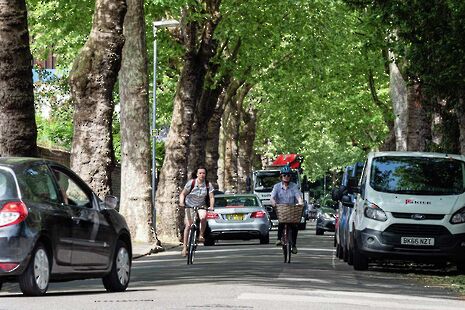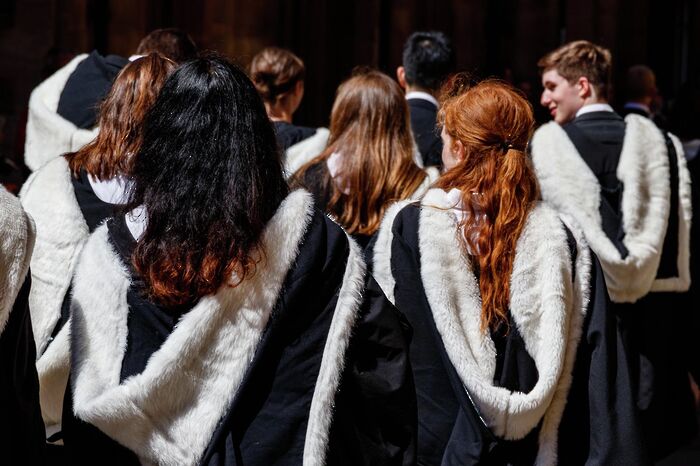The harassment of female cyclists is symptomatic of a wider sexualisation of female athletes
Isobel Duxfield recounts her experience of harassment whilst cycling, and argues that the sexualisation of female athletes should not simply be ignored

Content Note: This article contains detailed discussion of verbal sexual harassment and cat calling.
“Oi oi love, lift up the skirt!”
“I’d let you ride me too!”
“Helmet wanker!”
This is just a selection of the heckles I have received while riding my bicycle around Cambridge. Unfortunately, after almost a decade of cycling in London, Oxford, and Cambridge, I am accustomed to a regular onslaught of foul (and largely witless) abuse.
I am not alone in my experience: women across Cambridge — and, indeed, the UK — are disproportionately the target of aggressive abuse from drivers, pedestrians, and even fellow cyclists. This has been exhibited by multiple studies. The 2015 Near Miss Project revealed that women were almost twice as likely as men to be abused when cycling. Similarly, research published earlier this year showed drivers were significantly more likely to encroach (pass closer than three feet) on a female cyclist.
However, we have overlooked the ominous sexual harassment that so often accompanies these encounters. This struck me during a recent incident when, cycling back from a night out, a passing driver bellowed: “pedal that pussy!” It was not the outburst itself that alarmed me, nor the feeble attempt at alliteration, but the driver’s conviction that my being on wheels authorised commentary on my genitalia.
My female peers recount similar experiences. One second year undergraduate at St John’s College said: “I remember being called a ‘whore’ when cycling to class.” Another reflected: “I have lost count of the number of times I have been wolf whistled.”
I do not want to claim that female cyclists are the sole victims of abuse, nor do I claim that men are the only perpetrators. However, women are more often subject to a specifically sexualised provocation, which men appear to be spared. When I asked male students about their experiences, many recounted being reproached for curb hopping, or skipping traffic lights. None had encountered the sexually explicit aggression my female peers divulged. “Sure, I’ve been yelled at a few times,” said a postgraduate student at St Edmund’s, “but this has never had sexual overtones.”
Preoccupation with female cyclists’ sexuality is not new. It can actually be traced back to the invention of the modern bicycle in the late 19th century, where there was widespread concern over sexual morality, and it was feared women would use the saddle as a tool for masturbation. Women on bikes were also depicted as an erotic spectacle, with one enterprising author assessing cities by the allure of the women peddling their streets. The bicycle may have been hailed by civil rights leader Susan B Anthony for “Doing more to emancipate women than any one thing in the world,” but it has simultaneously been a vehicle for sexualising women.
Many cycling organisations have attempted to stem this abuse, based on the rationale that more bums on seats will normalise the female biker. For example, efforts like British Cycling’s ′Breeze’ project creates opportunities for female cyclists and embolden their confidence on the road. This hopes to shift sexist attitudes towards women behind the handlebars.
Men are encouraged to wed sexual appeal with athletic power, whereas women must relinquish one
However, the past cannot entirely explain the sexually explicit language directed towards female cyclists, particularly in Cambridge which boasts a roughly equal gender ratio of cyclists. Instead, we must see harassment as symptomatic of a wider, more disturbing sexualisation of the female athlete. Indeed, I have faced similar onslaughts of sexual expletives when out running, most recently from a trio of boys — no more than 15 years old — who proclaimed they would do things to me that I cannot repeat.
Despite huge progress in female sport, sportswomen continue to be defined by their sexuality. We see it in commentary on their physique such as the Sun’s description of Australian 100 metre hurdler, Michelle Jenneke, as “abs-olutely fabulous” and “not shy to show off her body.” It is also apparent in the “sexing up” of Olympic sports like beach volleyball at London 2012. Here, females wore bikinis whilst male players dressed in vest tops and knee-length shorts; a scene charmingly described by (now Prime Minister) Boris Johnson as semi-naked women “glistening like wet otters.”
Such sexualisation is perhaps most apparent in the promotion of women’s “activewear” apparel aimed more at sculpting a sexually appealing feminine figure than providing substantial support for exercise. An example is Gymshark, a brand that promises to “flatter your physique” with its skin-tight clothing. Women become docile eye candy, not energetic athletes.
This is not to say men are not victim to similarly unhealthy advertising. However, men are encouraged to wed sexual appeal with athletic power, whereas women must relinquish one. If clothing brands, tabloids and our Prime Minister are peddling such rhetoric, is it so shocking similar language is being used on the streets?
Faced with the threat of repeated sexual harassment, it’s no surprise women account for just one third of cyclists in the UK. As a healthy and ecologically-sound form of transport, cycling should be available to all. However, as I fend off yet another catcall, it doesn’t feel much like a female friendly option.
There is no quick fix to this harassment. British Cycling’s efforts are commendable, but are merely a plaster on what is a cultural and historical continuum. Nonetheless, the next time you cross a woman on a bike, refrain from appraising her arse while you pass.
 Comment / Plastic pubs: the problem with Cambridge alehouses 5 January 2026
Comment / Plastic pubs: the problem with Cambridge alehouses 5 January 2026 News / Cambridge academics stand out in King’s 2026 Honours List2 January 2026
News / Cambridge academics stand out in King’s 2026 Honours List2 January 2026 News / Cambridge businesses concerned infrastructure delays will hurt growth5 January 2026
News / Cambridge businesses concerned infrastructure delays will hurt growth5 January 2026 News / AstraZeneca sues for £32 million over faulty construction at Cambridge Campus31 December 2025
News / AstraZeneca sues for £32 million over faulty construction at Cambridge Campus31 December 2025 Interviews / You don’t need to peak at Cambridge, says Robin Harding31 December 2025
Interviews / You don’t need to peak at Cambridge, says Robin Harding31 December 2025










